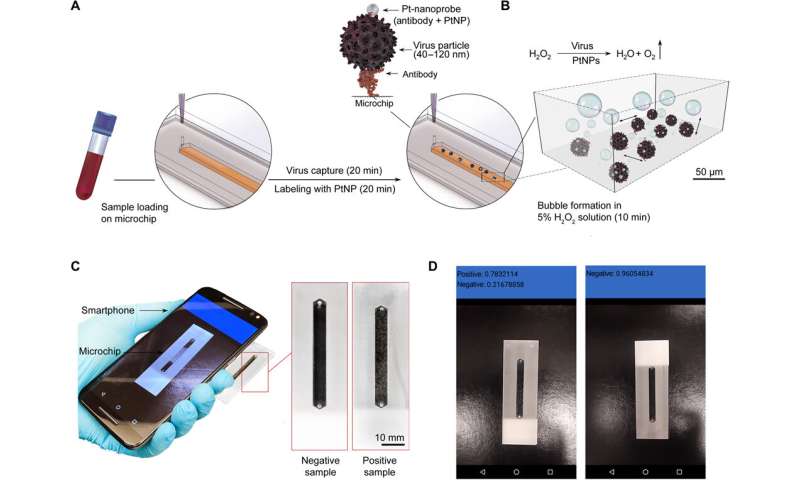Home » Health News »
Smartphone camera used to diagnose viral infections

A team of researchers at Brigham and Women’s Hospital, Harvard Medical School, has developed a way to use a smartphone camera to test for viral infections. In their paper published in the journal Science Advances, the group describes their system, which also involves the use of an external catalytic microchip device and a smartphone system that uses a trained deep learning algorithm.
As the pandemic has gripped the world for most of this year, scientists have been looking for ways to slow the spread of the next one. In this new effort, the team in Massachusetts has developed a smartphone-based system that can be used by non-medical people to test for a variety of viral infections.
The system is made up of a smartphone, an external catalytic microchip device and software. Body fluid samples are placed into a channel on the catalytic microchip device, which is then doused with a small amount of hydrogen peroxide. The resulting reaction leads to the formation of bubbles. The bubbles develop in unique patterns based in part on viruses in the fluid sample. The user points their smartphone camera at the bubbling sample and launches the deep-learning algorithm that has already been trained to identify the patterns and thereby recognize the presence of viruses. The whole process takes approximately 50 minutes. The researchers have thus far taught their system to recognize just three viruses, Zika and hepatitis B and C. But testing shows the system to be 99% accurate. They note that their system is more portable and cost effective than other solutions in the works.
Source: Read Full Article



